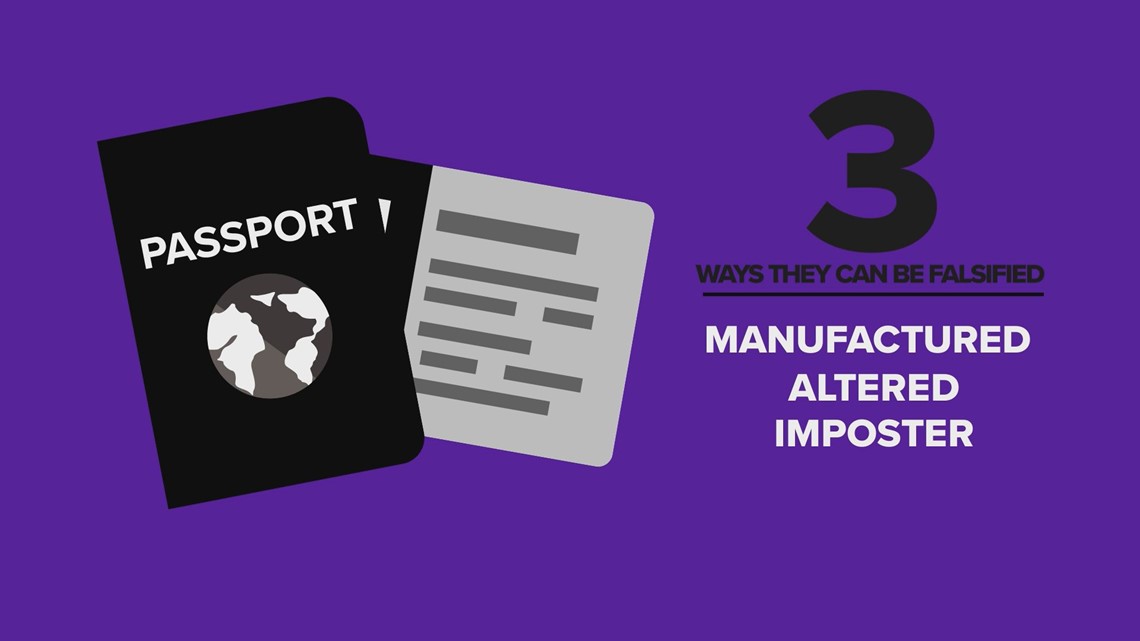HOULTON, Maine — Earlier this month, an Armenian woman who came into the United States legally as a tourist in 2001 was arrested, found to be in the U.S. illegally and in possession of fraudulent identification documents.
She had been in the country illegally for nearly 20 years, living right near the Houlton border crossing with Canada, and using the fake identification documents to obtain employment.
Her documents were what border patrols agents call manufactured, completely fake, but there are three ways these documents can be falsified.
There are documents that have been manufactured, altered, or are being used by an imposter.


U.S. border patrol agents, who work everywhere in the country between the ports of entry, see two types of documents: a permanent resident card, or a passport with a visa and entry document.
"You're using your eyes," said border patrol agent Mark Phillips, explaining how to spot a fake passport. "You're gauging the quality of the print and then you're also feeling it. Does it feel right? That's laminated over the top which feels different."
Phillips has been looking at identification documents while working as a border patrol agent for the past 13 years.
He's pretty good at spotting subtle differences between the fake ones and the real thing.
"Because of the security features that are printed in and that are designed to go into the U.S. government issued documents it's very difficult to reproduce that fraudulently," said Phillips.
However, there's still a big market for fake passports and other forms of identification. The criminals also get more sophisticated over time, which makes them more difficult to catch.
"No matter what security features we put into it, somebody's always going to try to counterfeit it," said Phillips. "The government tries to stay at least one step ahead of people who are producing or manufacturing fraud documents the best that we can. There's constant security upgrades. We get constant training and we get daily experience with going over them and just try to keep ahead of it."
"I've seen documents cost people in excess of $60,000 to come into the country," said Deputy Chief Jason Schneider, a 24 year veteran of the border patrol.
"Fraudulent documents hold value," added Phillips. "Depending on the quality of the document, it can hold a lot of value."
Documents being used by imposters are the most difficult to identify because the document itself is completely legitimate. It's just being used by the wrong person.
"That requires the training and the experience of the officer to actually pick out and to identify the person bearing the document as not being the proper person," said Phillips of imposters.
There are a couple of quick ways to easily spot an altered or manufactured document. Legitimate documents are all produced on high quality paper. The identification photo should never be raised, but should be printed flat on that paper surface. Additionally, real passports have a reflective 3-D strip which cannot be seen looking straight at the document. It should only be visible at an angle, and is difficult to replicate.
"The more that you handle them and the more that you look at the legitimate things, the easier it is to spot the illegitimate things," said Phillips.
It's a felony to lie to a border patrol agent or use fake identification documents to remain in the U.S.
Getting caught with fraudulent identification documents also comes with a steep price. The punishment for such felonies ranges from 1 to 20 years in prison.
Non-U.S. citizens, immigrants and non-immigrants, are required by law to carry their legitimate identification documents with them at all times. Not doing so is a misdemeanor, punishable by up to 30 days in jail and a $100 fine.

